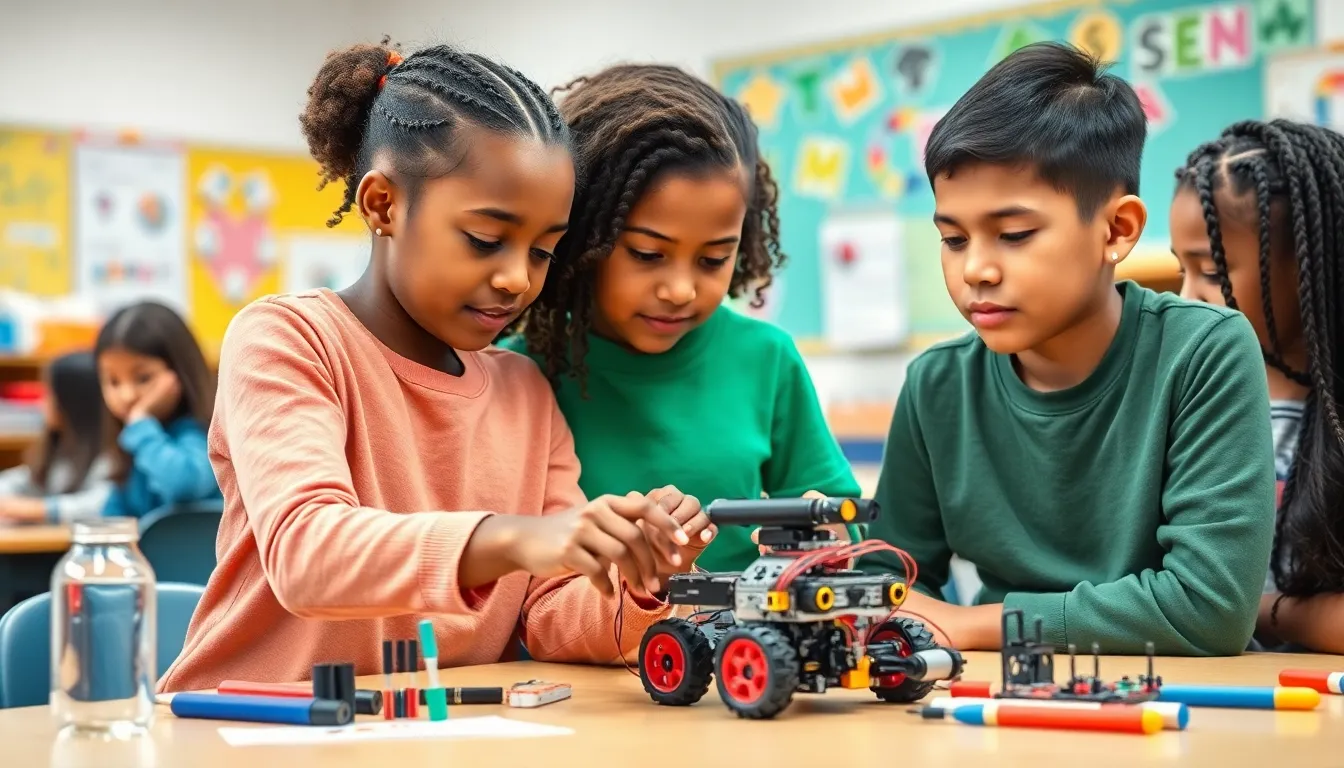In a world where technology reigns supreme and creativity knows no bounds, K-12 STEM education is the golden ticket to unlocking future potential. Imagine a classroom where students aren’t just passive listeners but active creators, turning their wildest ideas into reality. It’s like giving them a superhero cape and saying, “Go save the world with science, technology, engineering, and math!”
But let’s face it: STEM isn’t just for the brainiacs in lab coats. It’s for every curious mind eager to explore, experiment, and occasionally blow something up (safely, of course). As schools embrace this dynamic approach, they’re not just teaching subjects; they’re cultivating problem solvers, innovators, and the next generation of leaders. So buckle up, because K-12 STEM education is about to take students on a thrilling ride toward a future full of possibilities.
K-12 STEM Education
K-12 STEM education combines science, technology, engineering, and mathematics within a cohesive learning framework. Schools aim to integrate these disciplines, promoting a holistic approach to problem-solving and innovation.
Programs focus on hands-on experiences, allowing students to engage actively with real-world challenges. This experiential learning cultivates critical thinking and encourages collaboration among peers. Students develop essential skills like communication and teamwork, which are vital in today’s workforce.
Curricular initiatives may include robotics clubs, coding lessons, and project-based learning. These activities not only spark interest but also prepare students for advanced studies in STEM fields. Research indicates that students involved in STEM activities display higher achievement in related subjects.
Teachers play a crucial role in this educational model by fostering an inclusive classroom environment. Professional development for educators often emphasizes innovative teaching strategies that make STEM accessible and enjoyable for everyone.
Community partnerships enhance K-12 STEM programs by providing resources and expertise. Local industries may offer mentorship, internships, and hands-on opportunities, connecting classroom concepts to real-world applications.
K-12 STEM education represents a comprehensive approach to learning that equips students with the skills necessary for a rapidly evolving world. Emphasizing creativity and engagement, this model prepares future leaders and innovators for new challenges.
Importance of K-12 STEM Education

K-12 STEM education plays a vital role in shaping students’ futures. It equips learners with critical skills necessary for success in a modern world.
Skills Developed Through STEM
Students develop problem-solving abilities through hands-on activities. Creativity flourishes as they explore real-world challenges. Collaboration becomes essential, fostering teamwork among peers. Communication skills strengthen with group projects and presentations. Critical thinking grows, enabling analytical approaches to complex issues. Research shows that students participating in STEM programs perform better in math and science subjects.
Impact on Future Careers
Many future careers in technology rely heavily on STEM knowledge. Employers increasingly seek candidates with strong STEM backgrounds. Fields such as engineering, computer science, and healthcare prioritize STEM skills. According to the Bureau of Labor Statistics, STEM jobs are projected to grow by 10.5% from 2020 to 2030, outpacing other sectors. This growth signals a rising demand for skilled professionals in these areas. Equipping students with STEM education ensures they’re ready for in-demand careers.
Approaches to K-12 STEM Education
Different approaches enhance K-12 STEM education, enabling students to thrive in science, technology, engineering, and mathematics. Two significant methods include project-based learning and the integration of technology.
Project-Based Learning
Project-based learning (PBL) immerses students in real-world problems, encouraging collaboration and critical thinking. Students engage in projects that require them to explore concepts deeply, encompassing subjects like science, math, and engineering. Active participation fosters ownership of their learning experiences. Research reveals that PBL increases student motivation, leading to higher achievement in STEM subjects, as 70% of students demonstrate improved problem-solving abilities when involved in these projects. Teachers guide these endeavors, offering support while allowing students to develop practical skills. Ultimately, PBL cultivates innovative problem solvers prepared for future challenges.
Integration of Technology
Integration of technology plays a pivotal role in modernizing K-12 STEM education. Tools like coding software, simulation programs, and robotics foster engagement and create interactive learning environments. When technology is woven into curricula, students gain firsthand experience with tools valuable in the workforce. Approximately 75% of teachers report enhanced understanding of STEM concepts among students due to technology integration. Adaptive learning platforms cater to diverse learning styles, ensuring personalized educational experiences. Technology not only prepares students for advanced STEM disciplines but also equips them with the skills needed in rapidly evolving industries.
Challenges in K-12 STEM Education
Recognizing the challenges faced in K-12 STEM education is crucial for progress. Various barriers impact the effective implementation of STEM curricula across schools.
Equity and Access Issues
Equity and access issues significantly affect the reach of K-12 STEM education. Students in underserved communities often lack access to quality resources, limiting their exposure to STEM opportunities. Research indicates that schools in low-income areas frequently face budget constraints, resulting in outdated technology and insufficient materials for experiments. Additionally, racial and socioeconomic disparities hinder participation in advanced STEM programs, creating a divide in achievement levels. Ensuring equitable access to STEM resources boosts overall student engagement and achievement.
Teacher Training and Support
Teacher training and support play pivotal roles in the success of K-12 STEM education. Many educators report feeling unprepared to teach complex STEM topics, which affects instructional quality. Insufficient professional development often leaves teachers without updated methods or technologies, impacting student learning. Collaboration among teachers through training workshops can enhance teaching strategies and bolster confidence in delivering STEM content. Moreover, ongoing support helps educators stay informed about new tools and practices, ultimately enriching the educational experience in STEM classrooms.
Successful K-12 STEM Programs
Successful K-12 STEM programs exhibit key characteristics that foster student engagement and achievement.
Case Studies
Numerous districts showcase exceptional STEM initiatives. For example, the Boston Public Schools implemented a “STEM in the City” program, which partners with local universities to provide students with hands-on robotics and coding experiences. This collaboration enriches student learning, improving interest and competence in STEM subjects. Similarly, a school in Houston integrated project-based learning, allowing students to tackle real-world environmental challenges. Students demonstrated enhanced problem-solving skills and greater collaboration. Such case studies illustrate the profound impact of community involvement and innovative instruction techniques in K-12 STEM education.
Best Practices
Effective K-12 STEM programs incorporate specific best practices. Emphasizing hands-on learning opportunities engages students actively and cultivates critical thinking. Integrating technology such as coding platforms and 3D printing enhances comprehension and sparks curiosity. Collaboration among educators supports sharing successful teaching methods and resources, promoting a cohesive learning environment. Providing professional development allows teachers to gain confidence in delivering STEM content. Additionally, fostering partnerships with local businesses offers students real-world applications of their studies, reinforcing their relevance. Prioritizing these strategies results in higher student achievement and interest in STEM fields.
Conclusion
K-12 STEM education is more than just a curriculum; it’s a gateway to future opportunities. By fostering creativity and problem-solving skills, it prepares students for the demands of a rapidly changing workforce. As schools continue to innovate and engage students through hands-on experiences and technology integration, the impact on student achievement becomes increasingly evident.
Addressing challenges like equity and access remains crucial for ensuring that all students benefit from these programs. With the right support and resources, K-12 STEM education can empower the next generation of thinkers and innovators. Embracing this educational approach not only enriches students’ learning experiences but also equips them with the tools necessary to thrive in an ever-evolving world.

